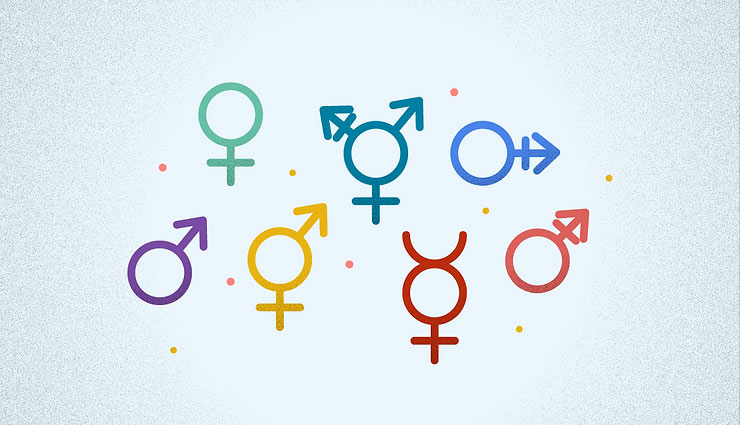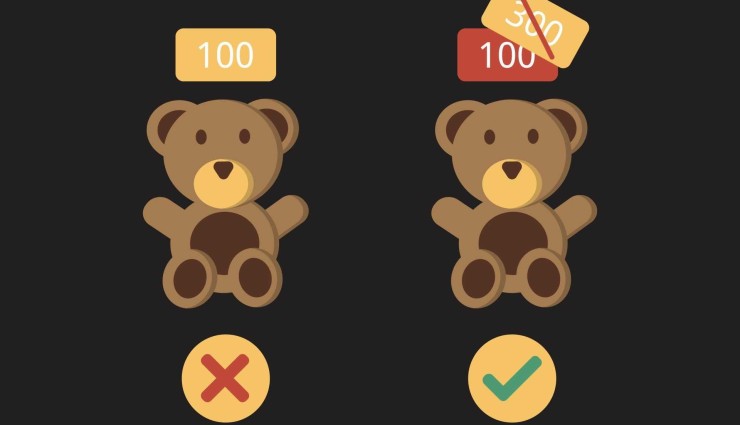Gender is a spectrum, and although genetic factors determine our biological sex, the definition of gender is up to the individual. Even if you don’t have any problem in defining and expressing your gender identity, getting to know different terms of gender identity is an excellent opportunity to learn that all people, regardless of gender and gender identity, deserve love, equality, support, and care. Join us in this article to learn the most common terms to define gender or sexual identity.
What is gender identity?
Gender identity is not determined by gender but is defined or changed by how a person feels about their gender, often over time. People try to explain and express their identity through the clothes they wear, the behavior they show, and their gestures. This identity may or may not match society’s expectations of a person’s gender, so people’s gender identity is not always by their gender and cannot be guessed based on appearance, anatomy, social norms, or stereotypes. For example, maybe a transgender woman defines her identity as male or non-binary. That is why it is essential to learn not to make assumptions about people’s gender based on appearance.
Defining gender in sociology
In sociology, the two terms gender and sex are different. Gender differentiates people based on their behaviors and traits, while the word gender expresses the physical characteristics and biological differences between men and women and has a biological meaning. This means that gender and sexuality cannot be considered the same in sociology and must be distinguished between them.
A look at the history of gender identity
Gender identity and sexual orientation are two completely different categories. Throughout history, lesbian, gay, bisexual, transgender, queer, intersex, and asexual identities have existed in other countries, and other societies have more or less accepted these identities.
In recent years, sex and gender issues are more than ever tied to politics, and politics influence public acceptance of these issues. Especially in the last fifty years, we have seen an increase in political and religious activities around the concept of sexual orientation and sexual identity. In all the countries of the world, there are various laws and policies that either move towards acceptance, equality, approval, and support or completely move away from it and do not recognize any identity other than men and women.
Relationship between gender identity and mental health

Suppose a person’s sense of his gender is not aligned with the physical and gender characteristics that were recorded for him at birth. In that case, there is a possibility of stressful experiences and jeopardizing a person’s mental health. Especially in societies where this inequality is still not accepted enough. These people are one step away from sexual dysfunction and more critical issues such as depression, self-harm, and suicidal thoughts.
The issue of gender dysphoria has not been in the Statistical Diagnostic Manual as a type of ” gender identity disorder ” for years. However, the discomfort still affects a person who feels a difference between their experienced gender and the gender they were assigned at birth.
What is gender identity disorder?
Discomfort due to the mismatch between biological sex and gender identity is described by the term “gender identity disorder.” This feeling of unhappiness and dissatisfaction is sometimes so intense that it provides the basis for depression and social anxiety of a person and has significant adverse effects on his daily life. The treatment of gender identity disorder includes talk therapy, the use of puberty-blocking drugs, and gender reassignment surgery.
Society’s understanding of different genders
Gender diversity is not a mental health disorder, and people who describe their gender identity in a framework other than male and female do not inherently have a problem. Unfortunately, however, some everyday experiences may increase these people’s vulnerability to mental health problems, including:
- Unhappiness because one’s gender identity does not match the gender one was assigned at birth.
- Discomfort with primary and secondary sexual characteristics that do not match one’s identity.
- A desire to have gender characteristics that one does not see in oneself or to remove some of one’s gender characteristics.
- Feeling different or separated from others.
- Verbal and behavioral harassment of community members after expressing their sexual identity.
- Pressure from ignoring your inner feelings about gender identity.
- Fear or concern about the acceptance of his gender identity by his loved ones and the possibility of rejection.
- You feel supported and not understood by friends, family, and loved ones.
These pressures stress a person, especially if combined with daily life problems such as managing lessons and school, finding a job, and building a healthy relationship.
Standard terms of gender identity
Nowadays, many terms are used to define gender identity. The most common terms are listed in the table below.
| Idiom | Definition |
| AFAB | This word is a surname for the English phrase “assigned female at birth”—the person’s gender was female. |
| ARAB | This word is a surname for the English phrase “assigned male at birth”—the person’s gender was male. |
| Agender | People who do not see themselves in any of the existing gender classifications. |
| Androgyne | A person who considers himself both male and female. (It has feminine and masculine features.) |
| Bigender | A person whose social behavior and characteristics are between men and women. |
| Gender binary | This term refers to gender classification systems that place people into the two unique categories of male and female. |
| Genderqueer | This group of people cannot be identified exclusively as male or female because, over time, they experience their gender identity in different ways. |
| Intergender | A non-binary gender identity that falls somewhere between male and female. In other words, it is a combination of men and women. |
| Multi-gender | It is an umbrella term to describe people who have more than one gender identity. |
| Nonbinary | These people cannot be classified exclusively as male or female because their characteristics do not correspond to those of women and men. |
| Omnigender | This non-binary gender identity describes people who experience multiple gender identities simultaneously or repeatedly. This person has the experience and has all genders. |
| Pangender | These people have experienced or are experiencing aspects of multiple genders over time. |
| Transsexual | This term falls under the umbrella of transgenderism. It is used to distinguish between gender identity (i.e., the internal experience of gender) and gender assigned at birth (male, female, or intersex). |
| Trigender | This term refers to people who experience three gender identities simultaneously or over time. |
| Cisgender | This term is used to describe those people whose gender identity is aligned with their physical characteristics. |
| Gender-neutral pronouns | Emphasis on using neutral pronouns for people outside the binary gender classification is in languages that use different pronouns to refer to male and female gender. |
| Demigender | This term describes people partially identifying with a particular gender but not necessarily the gender assigned at birth. These people do not see a specific gender for themselves and only have an internal connection with the concept of gender in their existence. |
| Genderfluid | A person who identifies as gender fluid believes their gender identity shifts between genders, changes, and evolves. |
| Graygender | This term describes people ambivalent about their gender identity or expression and cannot define themselves as male or female. |
| Cishet | This term refers to people who are both cisgender and heterosexual. |
last word
Many terms are used worldwide to describe gender identity. Many of these terms overlap, and some definitions have changed over time in different sources. In this article, we tried to introduce the most common terms to define gender identity so that you know how complex and sensitive the description of gender identity can be. Familiarity with these terms gives us a better and deeper understanding of the gender spectrum.
If this article was helpful to you, write us a valuable comment.
Warning! This article is only for educational purposes; you should consult a doctor or specialist to use it.



